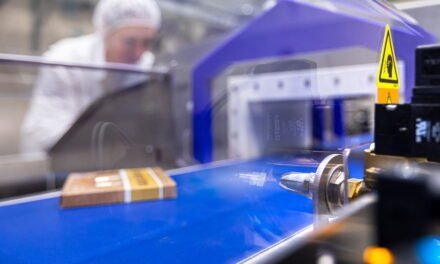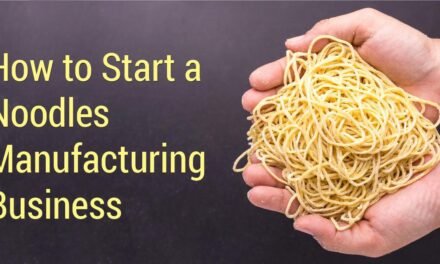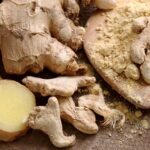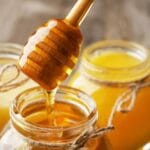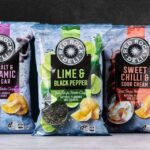Food extrusion is an emerging technology in the food industry, offering versatile, energy-efficient, and cost-effective production of various products with improved quality. It is a versatile, energy-efficient, cost-effective process for extruded food products, explain H Pandey, Butti Prabhakar, R V Prasad and R F Sutar.
Table of Contents
Food extrusion is one of the emerging technologies in food industries to process and market a large number of products with varying size, shape, texture, and taste. Food extrusion is the only process, which covers a wide range of food products such as ready to eat (RTE) breakfast cereals, snack foods, baby foods, etc. The main features of extrusion cooking are that it is a versatile process, energy-efficient, cost-effective and high product throughput with better quality (White, 1994).
It is a very efficient state-of-art technology adopted by snack food industries due to its nature of versatile, handy and low cost. It has a significant effect on the qualitative properties of food products such as the physical and textural properties of extruded food products.
Extruder cooking is accomplished through the application of heat, either directly by steam injection or indirectly through jackets occurring within the dough. During extrusion inactivation of many enzymes, protein denaturation, gelatinization of starch occur (Rossi and Peri, 1980). Extruder cooking is the method of forming substances by forcing them through a small opening known as die to produce products like tubes, rods or any other desired shape.
Food extruder is a device that speeds up the shaping process for food ingredients and can be used to cook, form, mix, texturize, and shape products under conditions that favor quality retention. The commonly used extruder contains flighted screws, which pushes the plasticized material forward and creates pressure before discharge end so that it extrudes through die opening.
Types of extrusion
Cold Extrusion
Cold extrusion is the process where the product is kept at low temperatures during its passage through the extruder by which mixing and size reduction operations can be performed in a single continuous process. It can be used to prepare comminuted meat product batters which are used for products like sausages, frankfurters. Production costs are lesser as compared to the hot extrusion process.
Hot/High-temperature Extrusion
Hot/High-temperature extrusion is a widely used extrusion process for foods. That is why the extrusion cooking is also known as High-Temperature Short Time (HTST) process. In this type of extrusion cooking, gelatinization, protein denaturation, enzyme inactivation and removal of undesirable flavors take place. Although most of the food nutrients are heat-sensitive in the extrusion cooking, the treatment is given only for a very short period so it is not so much harmful to the nutrients since the extrusion cooking is high-temperature short time process. Inactivation of deteriorative enzymes, removal of anti-nutritional factors and sterilization of food materials as well as pharmaceutical materials are possible by extrusion.
Advantages and Limitations of Food Extrusion
- Various advantages of the extrusion process including the development and creation of new food is possible.
- A wide variety of food with varying texture, size and shape can be produced.
- Handle raw materials from plant, animal & microbes with varying moisture content.
- Greater production capacity (e.g. as high as over sixteen tons per hour).
- High product quality due to good control over the process parameters.
- Better mixing of the raw ingredients as well as gives more flexibility to the product.
- More uniformity and consistency in the finished product.
- Less floor space & high efficiency result in the low cost of the final product.
- No effluents or hazardous waste production
- Some of the limitations of the extrusion process include-
- Difficult to clean and takes more time for cleaning because of the loose and sticky dough consistency of raw materials.
- The extrusion process is very complex to understand.
Food Extrusion Operation
The simple extruder consists of a feeding system, driving screw, heating system, die, and cutting system. An electric motor and a torque transfer system drive the rotation of the screw of the extruder. The extruder feeder delivers a dry mix for extrusion from the hopper/bin at a variable speed. Extruder screw’s feeding zone compresses the feed and its metering zone receives the compressed feed from the transition zone, homogenizes & forces it through the die at constant pressure. Direct or indirect heating by electric heaters and steam helps in controlling temperature. Increasing the steam flow rate also increases the temperature while passing the cold water lowers down the temperature. The extruder die provides the desired shape to the product followed by a cutting device, which cut the extruded food product into pieces as per the desired length.
Effect of Extrusion on Nutritional Quality
The quality of the food is affected by the handling and processing conditions of the extruder. It provides shelf-stable foods, free from microbial contamination. The extrusion cooking converts unpalatable ingredients (like soy and botanicals etc.) into more acceptable and palatable food products. All these help to increase the nutritional aspects of the food products. Various parameters affect the nutritional quality of the finished products, these are feed material composition, water content, screw speed, screw configuration, barrel temperature, etc.
The main functions of extrusion cooking are gelatinization of starch, denaturation of protein, inactivation of deteriorative enzymes, removal of undesirable flavours, anti-nutritionall factors and also helps in the reduction of microbial load. This process helps in destroying many toxins and anti-nutrients and also improves the safety and digestion of food. Extrusion cooking also helps in the more stability of vitamins, minerals, and other phenolic compounds.
Also Read: How to Start a Profitable Mini Dal Milling Business
Also Read: How to Start a Papad Making Business
Applications of Extrusion in Food Processing
Some of the major application of extrusion in food processing are discussed in the following sections:
Extruded Breakfast Cereals
In the direct expanded breakfast cereals, the flour is generally mixed with water below 20% and the process used may be either single screw or twin screw. In the pellet to flakes extrusion cooked breakfast cereals, the flour is mixed with the water upto 22-26%. For this process, only twin-screw extruders are used. Extrusion cooking of breakfast cereals is known as the thermomechanical cooking because it requires temperature in the range of 140-180°C, time in the range of 20-60s and moisture content below 26%. By varying these conditions new products can be developed. It is important to have moisture control of expanded products between 8-10% on a wet basis.
Flakes are one of the common breakfast products, can be prepared using a twin-screw hot extruder which combines heating with the act of extrusion to create a round-shaped product which is further flattened in roller flaker machine. The extruded flakes are made from sorghum, wheat, and cornflour. The snack can be coated with desired spices to create variations in the taste and flavor (such as masala coated, chocolate or essence, etc.).
Extruded Confectionary Products
These including caramels and toffees, clear hard candies, wine gums, and liquors are the best suitable examples of extrusion cooking process. In the case of chewing gum, the flavor is lost during manufacturing, but the extrusion helps the inadequate mixing of the flavor with the base gum. Chocolates can also be manufactured using extrusion which helps in the development of desirable flavors and removal of undesirable flavors (Best, 1994).
Extruded Puffed Products
Cheese balls are cooked, pressurized and pushed out of an extruder die that forms the particular snack shape then baked or fried or dried and flavored with oil and seasonings. Primary ingredients are corn grit, rice grits, and water. In the extruder, the dough expands and puffs up as it moves through the extrusion die. These extruded snacks called collets are cut to the desired length by a rotating knife and dried to reduce moisture level up to 1-2%. Then coating is done firstly by spraying palmolein oil (20%) and then a variety of dry flavors, seasonings, and color is dusted over them and this makes them stick to the snack and finally packed in polypropylene bags.
Extruded Rice Analogue
It utilizes mainly the broken rice which is either discarded or sold at subsidized price. Rice analogues are artificial rice kernels prepared by the extrusion process, in which the vitamins are embedded and consequently don’t separate from the rice grains. Embedding makes extraction of the vitamin by rinsing or cooking more difficult and provides a certain protection against oxidation as these vitamins are enveloped by a protective matrix thereby enhancing the availability of vitamins in rice.
Starch binding agents like glycerol monostearate or sodium staryllactilate may be added at the rate of 0.5% – 2% to the rice flour, which binds the starch during cooking and extrusion, results in a less sticky and firmer product which is more resistant to overcooking. These rice analogues can be used by the addition of an appropriate proportion of water at a temperature ranging from 90-100°C, whereupon the rice product rehydrates within the three minutes to obtain a product having the desired appearance and organoleptic properties to stimulate natural rice grain (Mishra et al., 2012).
Extruded Dal Analogue
Dal Analogue is a concept product that loosely resembles the natural product in the physical, nutritional, organoleptic and functional characteristics of Dal. Mishra et al., (2018) developed reconstituted dhal from the broken dhal flour of pulses namely, pigeon pea, Bengal gram, green gram, black gram, and lentil as the primary raw materials. The flour obtained by grinding the broken grains and sieving through 25 mesh, having 9.83% moisture content, preconditioned by addition of 18% water of the weight of dhal flour, fed into the extruder with feeder speed, extruder screw speed, and cutter speed respectively as 9 rpm, 30 rpm and 250 rpm. Dhal shaped extrudates dried at 60°C for 24 hours were ready and need reconstitution before consumption.
Extruded Meat Analogue
Chunks of extrusion texturized soy protein products and spun fiber-based preparations are marketed as imitation meat or meat analogues. Texturized vegetable products (TVP) are popular soy-based extruded food products. Meat analogue piece can be flavored and formed into sheets, disks, patties, strips and other shapes. Extrusion texturized soy flour has been called as the first generation TVP. Being made of flour, it has the composition and flavour of heat-treated soy flour.
The flavour is intensified by retorting. texturization of concentrates. Textured soy protein concentrates are called second-generation TVPs. Meat-free hot dogs, hamburgers, sausages, meat snacks are also included as extruded products (Bazua, 1979). Some pet foods are extruded through shaped dies and are cut into shaped particles like bones. It is used in the production of pasta or macaroni products, animal feeds and fish foods (Smith and Singh, 1996).
Core Filled Snacks
Core filling snacks machinery can take corn, rice, wheat, oat, rye and other grains as raw materials to produce extruded snacks, with crispy taste and lively shapes like round, triangle, square, stars, flower etc. step by step process for core filled snacks production is as follows – Mixing of ingredients, screw conveying, extruding, core filling, shaping, cutting, drying, cooling and packaging.
Also Read: How to Proceed for FSSAI Registration or FSSAI License
Conclusion
Food extrusion is still an art though in recent years several researchers have aimed at understanding the extrusion phenomenon in the light of the effect of extruder dimensions. The extrusion process is sustainable technology to minimize the environmental impact of food by-products and to utilize them effectively into valuable & healthier food products. Extrusion cooking technology will be successful in Indian industries with the removal of obstacles such as the development of high precision food extruder, curb on import technology, and upgradation of indigenous technology and optimization of the process variables of extrusion to achieve desired characteristics of the products, suitable to Indian taste.
References
- Bazua, C. D. (1979). Extruded corn flour as an alternative to lime-heated corn flour. Food Science, 44: 940
- Best, E. T. (1994). Confectionary extrusion. In N. D. Frame (Ed.) “The Technology of Extrusion Cooking”. Blackie, London.
- Mishra, A., Mishra, H.N. and Srinivasa Rao, P. (2012). Preparation of rice analogues using extrusion technology. International Journal of Food Science & Technology, 47(9), pp.1789-1797.
- Rossi, M. and Peri, C. (1980). Effects of extrusion cooking on structural and functional characteristics of sunflower protein. In “Food Engineering and Processing Applications”. pp. 197-209. London: Journal of Applied Science Publishers.
- Smith, R. C. and Singh, N. (1996). New applications of extrusion cooking technology. Indian Food Industry. 15: 14-23.
- White, G. (1994). Defining the true meaning of snacks. Food Technology International Europe, 2:115-117.
- Mishra, A., Raigar, R. K. and Mishra, H. N. (2018). Engineered Health Rice and Nutri Dal. In H.N. Mishra (Ed.), “Food Product and Process Innovations (Vol. 1)”. pp. 51-80. New Delhi: New India Publishing Agency.
*Authors are associated with College of Food Processing Technology & Bio Energy, Anand Agriculture University, Anand, Gujarat.
‘Processed Food Industry’: The Voice of Food Processing Industry
Processed Food Industry (PFI) is a premier English-language monthly B2B publication (ISSN 09721649) headquartered in New Delhi, catering to the vibrant and ever-evolving food processing industry. While we don’t claim to be the largest or most widely read, our proud legacy of over 27 years—publishing continuously since 1997—has earned us the trust of industry professionals as a reliable source of insights and information.
If your goal is to tap into the booming Indian and South Asian markets to promote your equipment, technology, software, or consumables, PFI is your strategic partner. With our hybrid approach across print, web, and social media, we help you establish strong brand recognition rooted in market relevance. Backed by a team of top-tier technical writers, we’re ready to work closely with you and your customers to craft compelling content that drives results.
India and South Asia’s food industry is expanding rapidly, driven by efficiency and cutting-edge innovations. Don’t miss the opportunity to elevate your brand and engage with this dynamic market. Get our 2025 media kit to fine-tune your marketing strategy, increase your visibility, and convert potential customers into valuable conversations. Additionally, ask for a sample copy of our monthly magazine and experience the quality and relevance we deliver.
Let us help you define your role in the future of the food processing industry.

Have a news or topic to share with industry? Write to us editorial@pfionline.com



